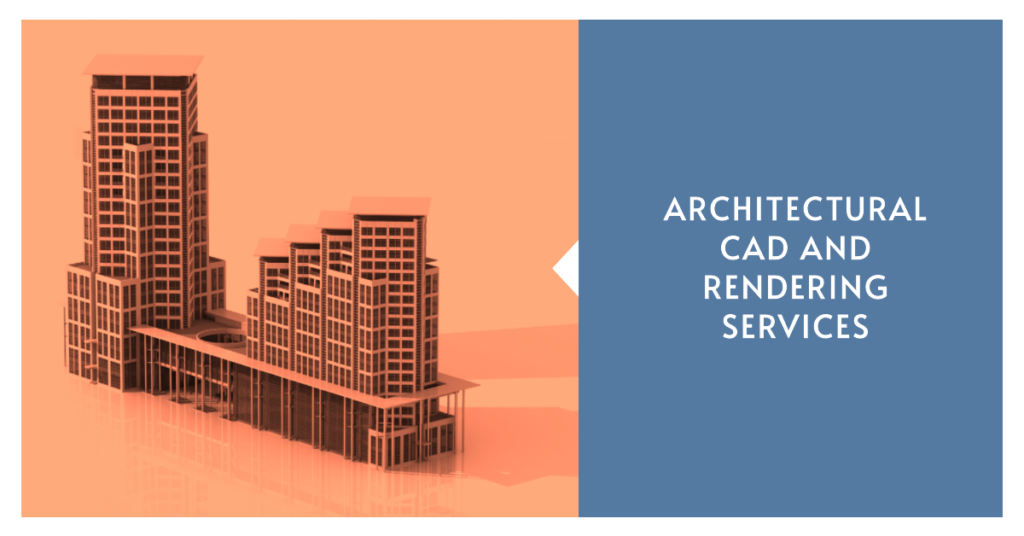
Table of Contents
Introduction
In the dynamic world of architecture, the marriage between creativity and technology is indispensable. Architectural CAD (Computer-Aided Design) and rendering services have revolutionized the way architects conceptualize, design, and present their projects. From 2D drafting to immersive 3D visualizations, these services offer a spectrum of tools to bring architectural visions to life with precision and clarity.
Understanding Architectural CAD
Architectural CAD encompasses a range of software tools tailored specifically for architectural design and drafting. These tools enable architects to create detailed floor plans, elevations, and sections with utmost accuracy. Through intuitive interfaces and powerful features, CAD software streamlines the design process, allowing architects to iterate rapidly and explore various design options effortlessly.
Transitioning to 3D Modeling
With the advancement of technology, 3D modeling has become a cornerstone of architectural design. By transitioning from traditional 2D drafting to 3D modeling, architects can visualize their projects in a more immersive and realistic manner. 3D modeling software allows architects to create intricate digital models of buildings, complete with textures, lighting, and landscaping details, providing clients and stakeholders with a clearer understanding of the final outcome.
The Evolution of Rendering Services
Rendering services play a pivotal role in transforming architectural models into photorealistic images and animations. Through the use of rendering software, architects can generate high-quality visuals that showcase their designs in various contexts, from different lighting conditions to different times of the day. Rendering services not only enhance the presentation of architectural projects but also facilitate informed decision-making by allowing stakeholders to visualize the proposed designs more comprehensively.


Types of Rendering Techniques
Rendering techniques vary in complexity and output quality, catering to different project requirements and budget constraints. From simple line drawings to sophisticated photorealistic renderings, architects can choose from a range of rendering styles to communicate their design intent effectively. Some common rendering techniques include wireframe rendering, which emphasizes the underlying structure of the building, and ray tracing, which simulates the behavior of light to create highly realistic images.
Utilizing Virtual Reality (VR) and Augmented Reality (AR)
Virtual Reality (VR) and Augmented Reality (AR) are revolutionizing the way architects interact with their designs and clients. By leveraging VR and AR technologies, architects can create immersive experiences that allow clients to virtually walk through their projects before they are built. VR enables architects to explore spatial relationships and test design concepts in a simulated environment, while AR overlays digital information onto the physical world, enabling architects to superimpose their designs onto existing spaces.
Enhancing Presentation with Animation
Animation is a powerful tool for architectural visualization, allowing architects to tell a compelling story about their designs. By animating camera movements and environmental elements, architects can showcase the flow and functionality of their projects in a dynamic and engaging manner. Whether it’s a flythrough of a proposed building or a time-lapse of its construction process, animation brings architectural designs to life in ways that static images cannot.
The Role of Photomontage in Contextualizing Designs
Photomontage is a technique used to integrate architectural renderings into existing photographs or environments, providing a realistic portrayal of how the proposed designs will interact with their surroundings. By blending rendered images with photographs of actual sites, architects can demonstrate the impact of their designs on the built environment and solicit feedback from stakeholders more effectively. Photomontage helps bridge the gap between imagination and reality, enabling architects to envision the future of urban landscapes with greater clarity.
Conclusion: Embracing Innovation in Architectural Visualization
In conclusion, architectural CAD and rendering services have become indispensable tools for architects seeking to push the boundaries of design and visualization. From the precision of CAD drafting to the immersive experience of VR walkthroughs, these services offer architects a plethora of options to communicate their design ideas effectively and engage stakeholders throughout the project lifecycle. By embracing innovation and leveraging technology, architects can create more sustainable, functional, and aesthetically pleasing built environments for generations to come.



